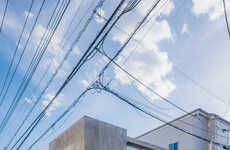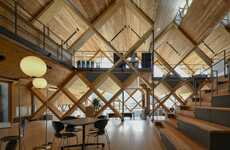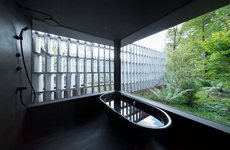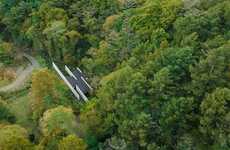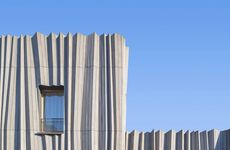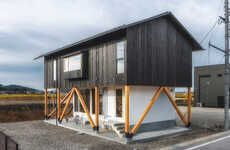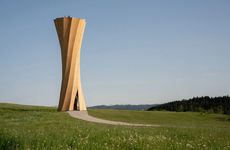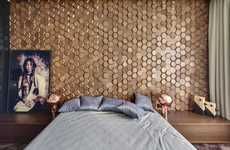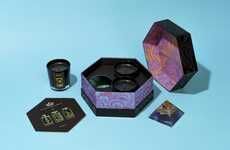
Kozo Keikaku Kunkyusho's Seismic Wall Uses a Checkered Pattern
Francesca Mercurio — September 21, 2021 — Art & Design
References: designboom
A Japan-based engineering firm, Kozo Keikaku Kunkyusho, has developed an innovative earthquake-resistant wall. The structure is made using a checkered block pattern constructed with 'CLT wood. Each timber panel is cross-laminated, organized in a checkered pattern, and then secured using steel plates and drift pins. The result is a ventilated, protective, and aesthetically appealing design that can endure the disruption from an earthquake.
Kozo Keikaku Kunkyusho architects have partnered with design firm Kengo Kuma & Associates to create a children's kindergarten using this earthquake-resistant wall. The future Heisei Gakuen Himawai Kindergarten will feature a two-storied structure whose facade is made of an earthquake-resistant 'CLT wall and surrounded by a garden.
The engineering firm plans to continue developing its seismic wall designs by incorporating elements of steel and reinforced concrete.
Image Credit: designboom, designboom
Kozo Keikaku Kunkyusho architects have partnered with design firm Kengo Kuma & Associates to create a children's kindergarten using this earthquake-resistant wall. The future Heisei Gakuen Himawai Kindergarten will feature a two-storied structure whose facade is made of an earthquake-resistant 'CLT wall and surrounded by a garden.
The engineering firm plans to continue developing its seismic wall designs by incorporating elements of steel and reinforced concrete.
Image Credit: designboom, designboom
Trend Themes
1. Earthquake-resistant Wood Structures - Innovative wood structures can be engineered to resist earthquakes, paving way for safe, sustainable buildings with lower construction costs.
2. Cross-laminated Timber (CLT) Reinforcement - Cross-laminated timber (CLT) can be reinforced with steel and concrete to create durable, disaster-resistant structures that also offer improved aesthetics and indoor air quality.
3. Collaborations for Sustainable Design - Partnerships between engineering and design firms can lead to innovations, such as earthquake-resistant timber walls, that promote sustainability, safety, and creativity in building design.
Industry Implications
1. Construction - The construction industry can incorporate earthquake-resistant wood structures using cross-laminated timber (CLT) to provide safer and cost-effective building solutions to customers.
2. Architecture - Architects can work with engineering firms to create innovative designs using earthquake-resistant materials like cross-laminated timber (CLT), steel, and concrete, for sustainable and safe building projects.
3. Wood Products - Manufacturers of cross-laminated timber (CLT) and other wood products can leverage its benefits, such as improved indoor air quality and sustainability, to develop new markets and applications for wood products in construction.
4.8
Score
Popularity
Activity
Freshness


